Want to cut costs by value engineering, and optimize value-based efficiency in medical enclosures?
Welcome to our blog, where we explore ways to cut costs and enhance efficiency in medical enclosures through the practice of value engineering. In today’s rapidly evolving field of medical device manufacturing, finding innovative solutions to optimize designs and processes is essential. That’s where value engineering comes into play.
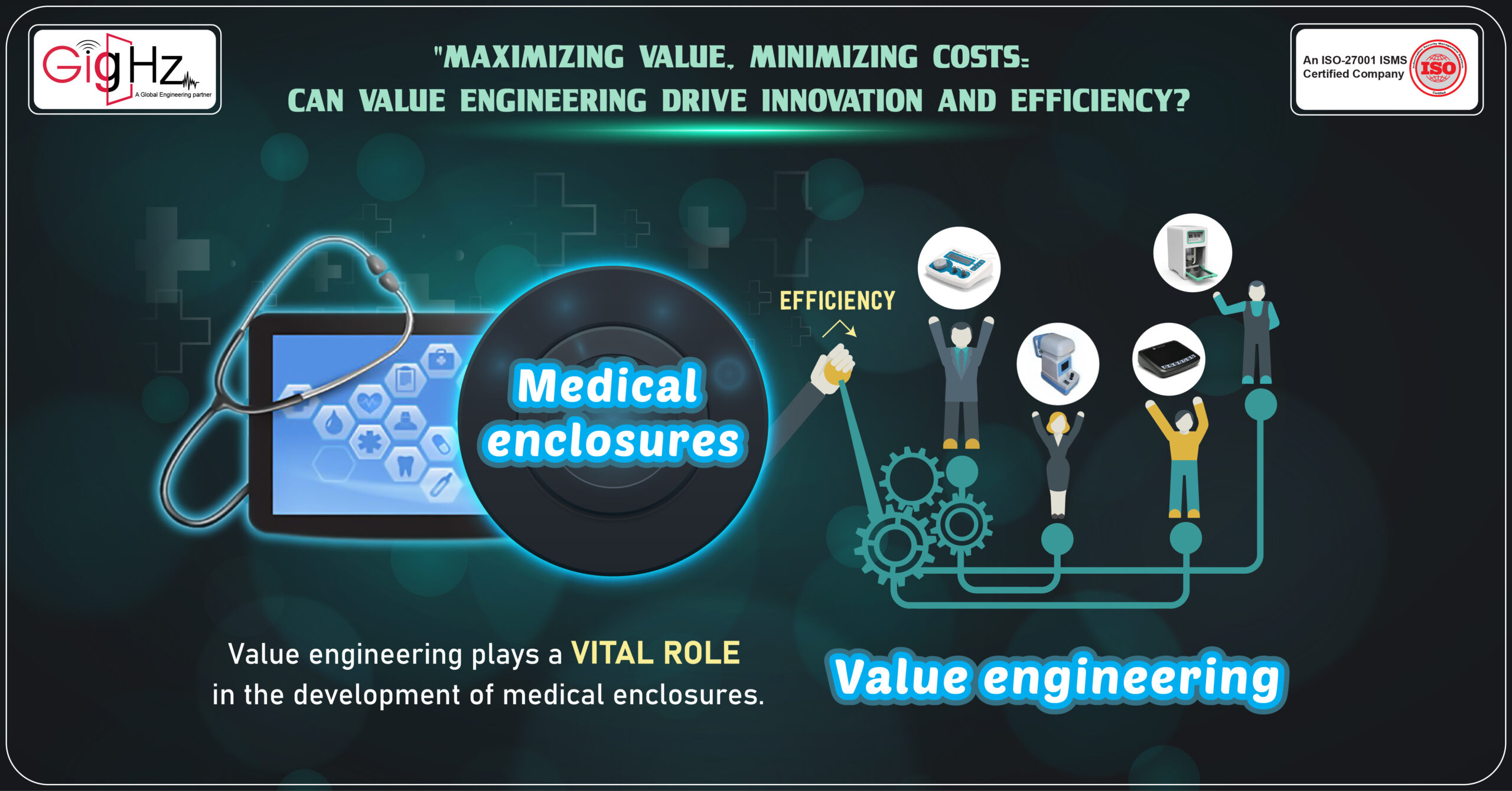
Welcome to our blog, where we explore ways to cut costs and enhance efficiency in medical enclosures through the practice of value engineering.
In today’s rapidly evolving field of medical device manufacturing, finding innovative solutions to optimize designs and processes is essential. That’s where value engineering comes into play.

Category :
Published Date :
March 5, 2024
Category :
Published Date :
March 5, 2024
Category :
Published Date :
March 5, 2024
So, what exactly is value engineering?
In simple terms, it is a systematic approach that focuses on maximizing the value of a product or process while minimizing costs.
It involves analyzing every aspect of the design, functionality, and production process to identify areas for improvement.
Value engineering plays a vital role in the development of medical enclosures.
These enclosures are critical for protecting delicate and sensitive medical devices, ensuring their safe operation within healthcare facilities.
However, they can often be complex and costly to manufacture.
By applying value engineering principles, we can identify opportunities to streamline the design, eliminate unnecessary features, and optimize materials and manufacturing processes.
The ultimate goal is to enhance performance, reduce manufacturing costs, and improve overall efficiency.
Understanding value engineering with efficiency
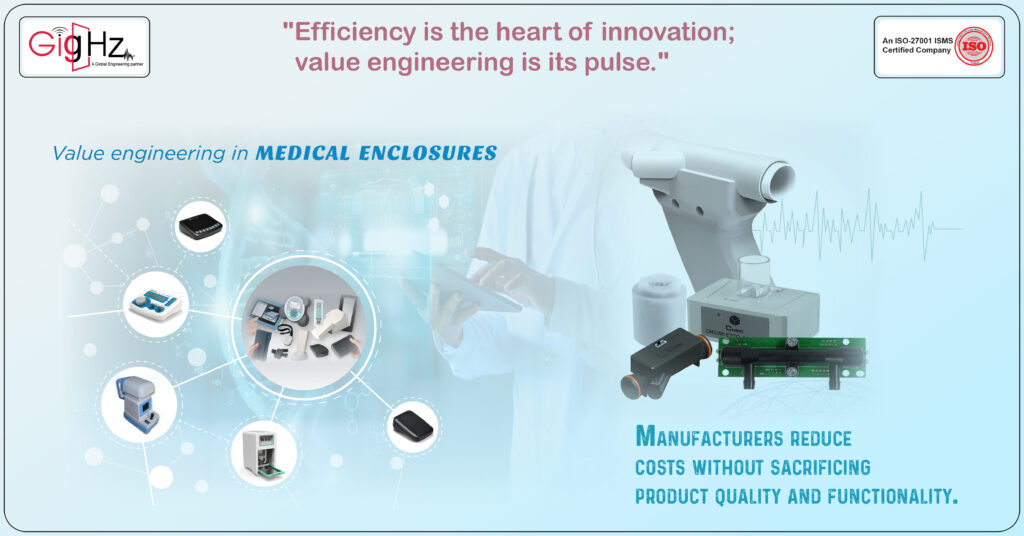
The benefits of value engineering in medical enclosures are significant.
Firstly, it helps manufacturers cut costs without compromising the quality and functionality of the final product. By eliminating unnecessary components or using alternative materials, production expenses can be significantly reduced.
Secondly, value engineering drives efficiency improvements.
By analyzing the existing design and production processes, we can identify bottlenecks, eliminate redundancies, and implement more streamlined and automated manufacturing methods. This not only saves time but also increases productivity.
Another benefit of value engineering is the potential for innovation. By challenging the status quo and seeking alternative solutions, we can spark new ideas and drive advancements in medical enclosure design. This can lead to improved patient outcomes, enhanced user experience, and a competitive edge in the market.
Analysing Existing Design
Upon receiving the client’s request for value engineering, we carefully examined the existing design of the medical device enclosure.
Several challenges quickly became apparent.
- The current design contained numerous undercuts that were not cost-effective to manufacture, other than through 3D printing.
- This resulted in a high production cost of $385 per unit.
- Limited accuracy of 0.4mm with 3D printing machines.
Alternative Techniques we Explored for existing design
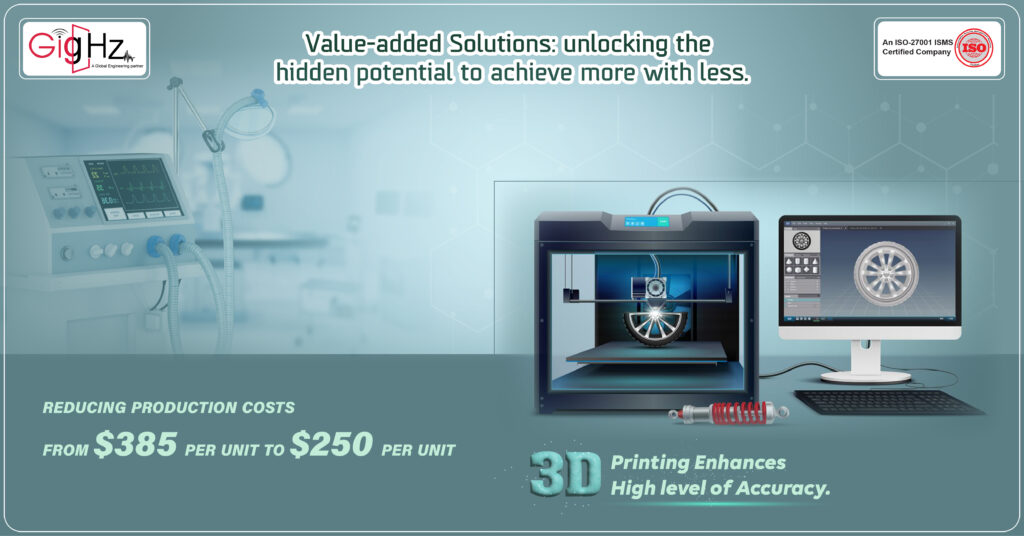
One notable issue was the presence of numerous undercuts in the design, which made traditional manufacturing methods costly and inefficient. To overcome this, we explored alternative manufacturing techniques, such as 3D printing.
By utilizing 3D printing machines, we were able to eliminate the need for costly tooling and reduce production costs significantly. The use of 3D printing allowed for greater design flexibility and eliminated the limitations imposed by traditional manufacturing methods.
Additionally, 3D printing enabled us to achieve a higher level of accuracy, with tolerances as low as 0.4mm. This ensured that the medical device enclosures met the necessary requirements for functionality and quality.
Through value engineering, we were able to optimize and required to make the design of the medical device enclosure, reducing production costs from $385 per unit to $250 per unit.
This cost reduction not only improved the financial viability of the product but also made it more accessible to healthcare providers and patients.
By leveraging innovative manufacturing techniques and challenging the status quo, we were able to enhance efficiency and cost-effectiveness in the production of medical device enclosures.
This demonstrates the power of value engineering in driving innovation and improving the overall success of medical device manufacturing.
How we Executed the cost savings in Medical Enclosure?
To ensure the effective execution of the value engineering process, we followed a structured approach.
Gather Information
It began with gathering comprehensive information about the medical device enclosure’s lifecycle, manufacturing processes, and distribution methods.
Brainstorming
Next, we engaged in brainstorming sessions to explore numerous ideas and suggestions aimed at reducing costs and improving the design. Some of the ideas included transitioning to injection moulding, eliminating undercuts, removing unnecessary features, adopting a core cavity approach, and incorporating Design for Manufacturability (DFM) analysis principles.
Identifying Cost Areas
During the process, we identified the high cost and time consumption associated with 3D printing, which amounted to 7 hours and $385 per part.
Redesign
With the help of Solidworks, we embarked on the redesign phase, creating configurations that would streamline the design process. We opted for the same material as the existing design while selecting ABS PC for plastic components. The redesign involved reducing mass, eliminating undercuts, adding draft angles, and incorporating additional buttons.
Analysis
To ensure the proposed design met the required standards, we conducted a thorough analysis using Solidworks. This analysis involved comparing the proposed design with the existing one, focusing on factors such as rigidity and functionality.
Final Review and Documentation
Following the final review of the proposed design, we documented the entire value engineering process, capturing the key steps, decisions, and outcomes.
By adhering to this structured approach, we were able to optimize the medical device enclosure design, reduce costs, and enhance overall efficiency. This story showcases the effectiveness of value engineering in driving innovation and streamlining manufacturing processes.
Results and Value Added:
The proposed design achieved remarkable outcomes and delivered substantial value additions:
Cost Reduction: By utilizing injection molding instead of 3D printing, we were able to reduce the final unit cost by an impressive 52%. This decrease in production costs was accompanied by a significant reduction in production time (8 parts per hour).
Improved Efficiency: Through a substantial mass reduction of 58% and the removal of undercuts, we simplified the manufacturing process and enhanced production efficiency.
Enhanced Performance: In comparison with the existing design, the proposed design exhibited a 62% increase in thermal performance, a critical factor in medical device enclosures.
Our Notable Upgrade: Engineering as a Service (EaaS)
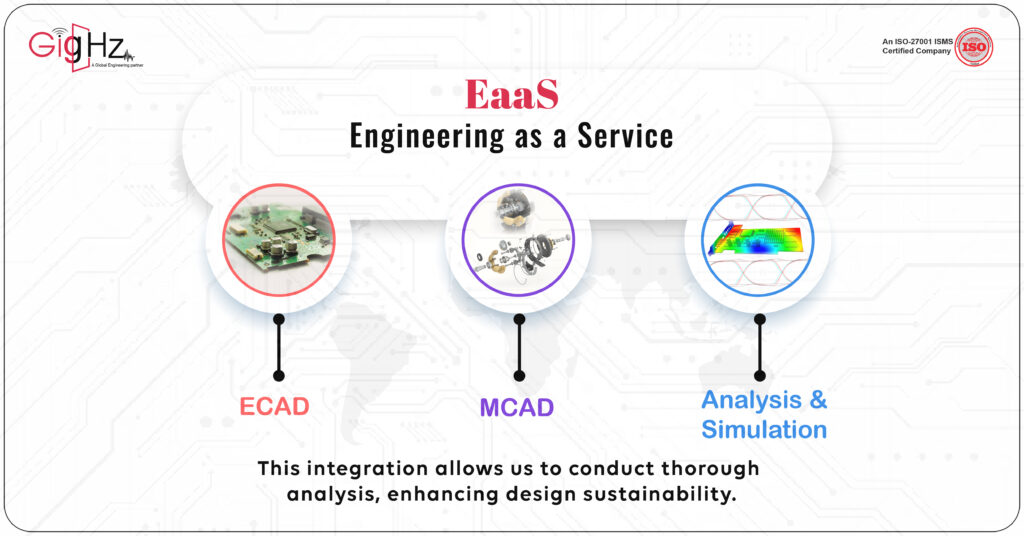
Absolutely!
The world of engineering is constantly evolving, and it’s fascinating to see how Engineering as a Service (EaaS) is keeping up with the demands of the industry.
By harnessing the power of ECAD, MCAD, and Analysis & Simulation, we’re able to provide comprehensive solutions that cover every aspect of the engineering process.
It’s really amazing how far we’ve come in terms of integrating different disciplines within engineering. With EaaS, we can seamlessly bring together electronic design, mechanical design, and analysis and simulation, all under one roof.
This not only saves time but also improves efficiency and collaboration among engineers.
Why we do?
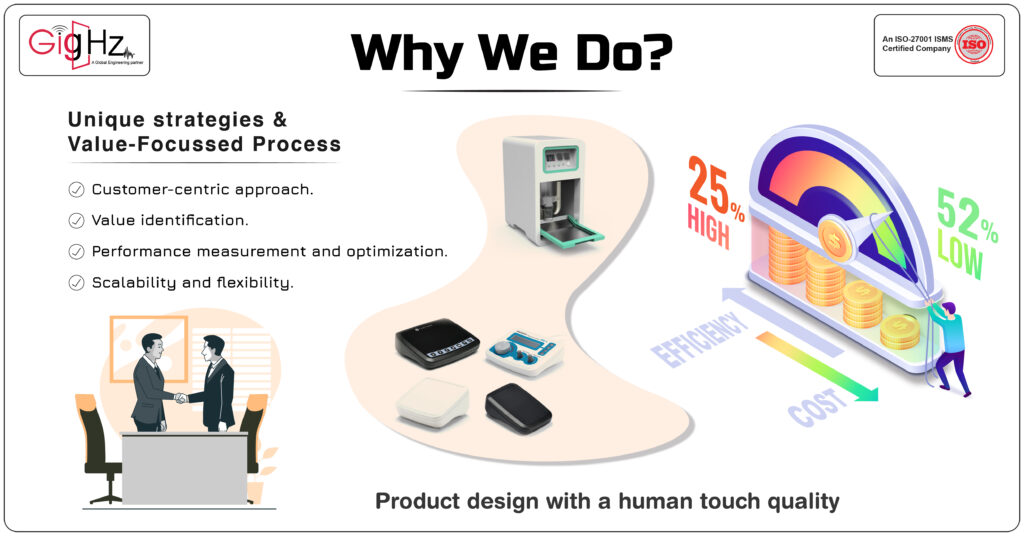
Amidst the ever-evolving technological landscape, we distinguish ourselves from the competition by embracing innovation and leveraging our value-driven process.
This unique approach empowers us to achieve remarkable results, including a substantial 52% reduction in costs and a notable 25% improvement in operational efficiency.
We continually challenge our value engineering capabilities by embracing medical device enclosures, ensuring that we keep your time and costs under control.
Through this commitment, we are able to transform product design with a touch of human quality that sets us apart from the rest.
Conclusion
In an impressive display of efficiency and innovation, our team accomplished a remarkable feat by reducing the prototype cost of the Medical Product by a staggering 52% within just three days.
A crucial step in achieving this cost reduction was transitioning from 3D printing to Injection Molding. This strategic shift allowed us to leverage the benefits of mass production and optimize the manufacturing process for greater cost-effectiveness.
Furthermore, we implemented strategic design changes that played a significant role in driving down costs. By carefully analyzing the product’s design, we were able to identify areas where modifications could be made without compromising quality. These design adjustments proved instrumental in achieving the substantial cost cut.
While there was an initial investment in mold tooling, we project a swift recovery after producing a mere 600 pieces. This demonstrates the long-term financial viability of this cost-saving initiative.
This outstanding outcome serves as a testament to our unwavering commitment to delivering efficient solutions without compromising on quality.
Schedule a demo call. Book a free consultation now. https://calendly.com/gighz/30min
Discover our Specialities. Visit our Services Page. https://gighz.net/services/
